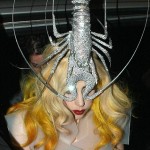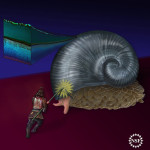This is the fifth of five articles about the shared characteristics of shallow and deep-water corals. It’s far from complete, I’m afraid.


Deep corals are out of sight, but not out of reach. The commercial fishermen working above just trawled an old growth sea forest near New Zealand. The bubblegum corals (Paragorgia sp.) on deck in the pictures below are on the order of 100-200 years old. Notice there’s not one colony on the deck, but several. The corals were collected from a seamount by commercial fishers trawling for “orange roughy”- the fish formerly known as “slimehead”. They changed the name 20 years ago so you would buy it.
We don’t need to catch our fish with dragged nets. Many fishermen agree. Bottom trawling is not ecologically sustainable. It destroys essential fish habitat. We can do better. If you love corals, don’t eat trawled food. Eat wild salmon, and farmed oysters, conch, and mussels.
If you care about deep-sea corals, you should research and know your seafood. Several marine non-profits have taken up the flag against trawling, including MCBI, Greenpeace, and Oceana. Join them in their fight, if you can. They’re going to win this battle against bottom trawling someday soon.
More on human induced impacts follows below in a fully referenced article by John Guinotte of MCBI.





Man, thats sickening. Look at the size of that Paragorgia, how many associate animals (mostly inverts) just lost their home as well… shrimp, crabs, polychaete worms, Ophiuroids, then there are the trawl doors one of those 100ton beasts can literally flatten anything on a sea mount and gouge the seamount as well.
Live colonies half that size can have over 200 associated invertebrates.
Those pictures are amazing, and very illustrative of the problem. Could you provide a link to your source for them if a larger version of each exists?
http://oceans.greenpeace.org/en/the-expedition/news/bottom-trawling-eu
Here’s a Greenpeace link to one of the images, xeip. I’ll try to research the other. You might check http://www.savethehighseas.org
Xeip, Google search “waipori coral” images and you’ll find a few different options, one of which is the Greenpeace press office.